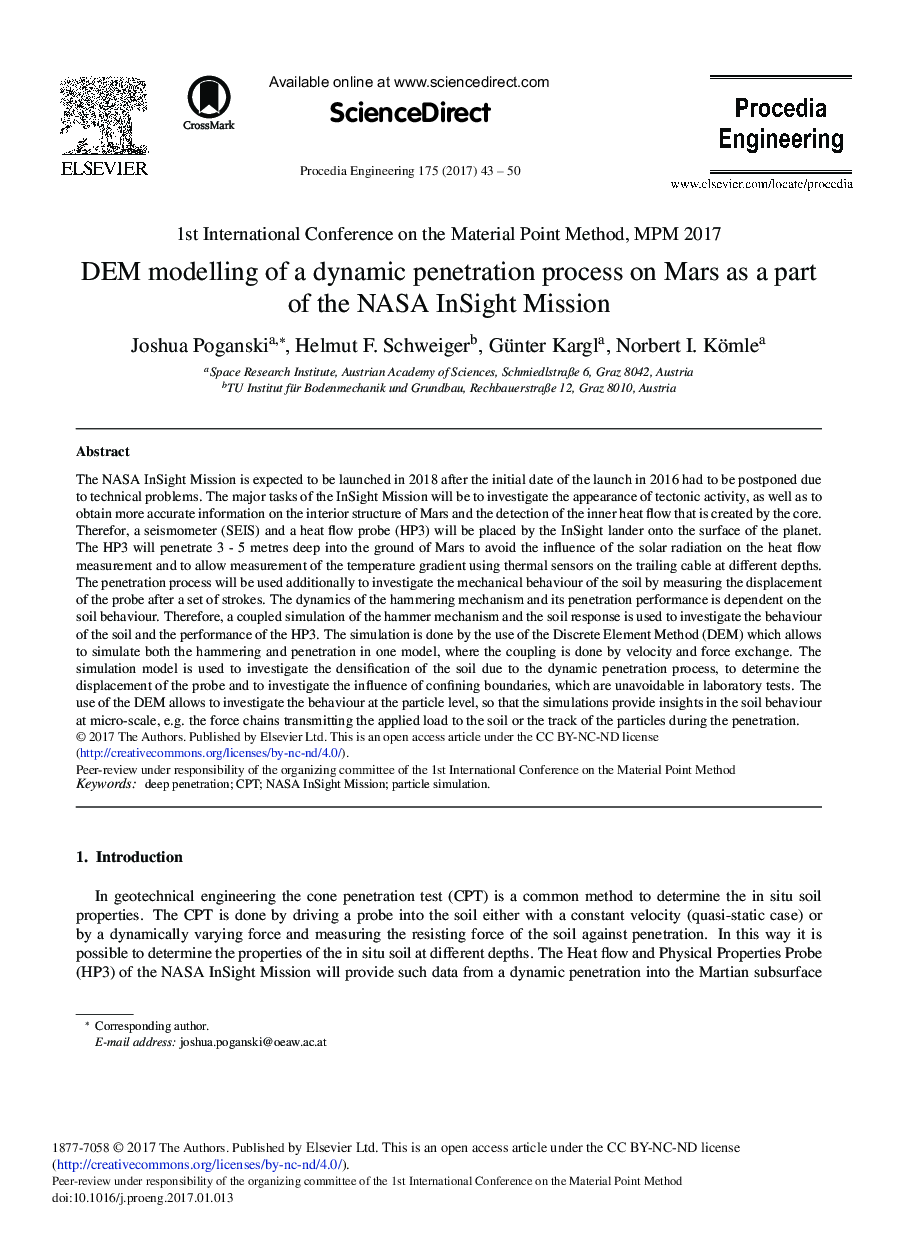| کد مقاله | کد نشریه | سال انتشار | مقاله انگلیسی | نسخه تمام متن |
|---|---|---|---|---|
| 5028483 | 1470651 | 2017 | 8 صفحه PDF | دانلود رایگان |
عنوان انگلیسی مقاله ISI
DEM Modelling of a Dynamic Penetration Process on Mars as a Part of the NASA InSight Mission
دانلود مقاله + سفارش ترجمه
دانلود مقاله ISI انگلیسی
رایگان برای ایرانیان
موضوعات مرتبط
مهندسی و علوم پایه
سایر رشته های مهندسی
مهندسی (عمومی)
پیش نمایش صفحه اول مقاله

چکیده انگلیسی
The NASA InSight Mission is expected to be launched in 2018 after the initial date of the launch in 2016 had to be postponed due to technical problems. The major tasks of the InSight Mission will be to investigate the appearance of tectonic activity, as well as to obtain more accurate information on the interior structure of Mars and the detection of the inner heat flow that is created by the core. Therefor, a seismometer (SEIS) and a heat flow probe (HP3) will be placed by the InSight lander onto the surface of the planet. The HP3 will penetrate 3 - 5 metres deep into the ground of Mars to avoid the influence of the solar radiation on the heat flow measurement and to allow measurement of the temperature gradient using thermal sensors on the trailing cable at different depths. The penetration process will be used additionally to investigate the mechanical behaviour of the soil by measuring the displacement of the probe after a set of strokes. The dynamics of the hammering mechanism and its penetration performance is dependent on the soil behaviour. Therefore, a coupled simulation of the hammer mechanism and the soil response is used to investigate the behaviour of the soil and the performance of the HP3. The simulation is done by the use of the Discrete Element Method (DEM) which allows to simulate both the hammering and penetration in one model, where the coupling is done by velocity and force exchange. The simulation model is used to investigate the densification of the soil due to the dynamic penetration process, to determine the displacement of the probe and to investigate the influence of confining boundaries, which are unavoidable in laboratory tests. The use of the DEM allows to investigate the behaviour at the particle level, so that the simulations provide insights in the soil behaviour at micro-scale, e.g. the force chains transmitting the applied load to the soil or the track of the particles during the penetration.
ناشر
Database: Elsevier - ScienceDirect (ساینس دایرکت)
Journal: Procedia Engineering - Volume 175, 2017, Pages 43-50
Journal: Procedia Engineering - Volume 175, 2017, Pages 43-50
نویسندگان
Joshua Poganski, Helmut F. Schweiger, Günter Kargl, Norbert I. Kömle,